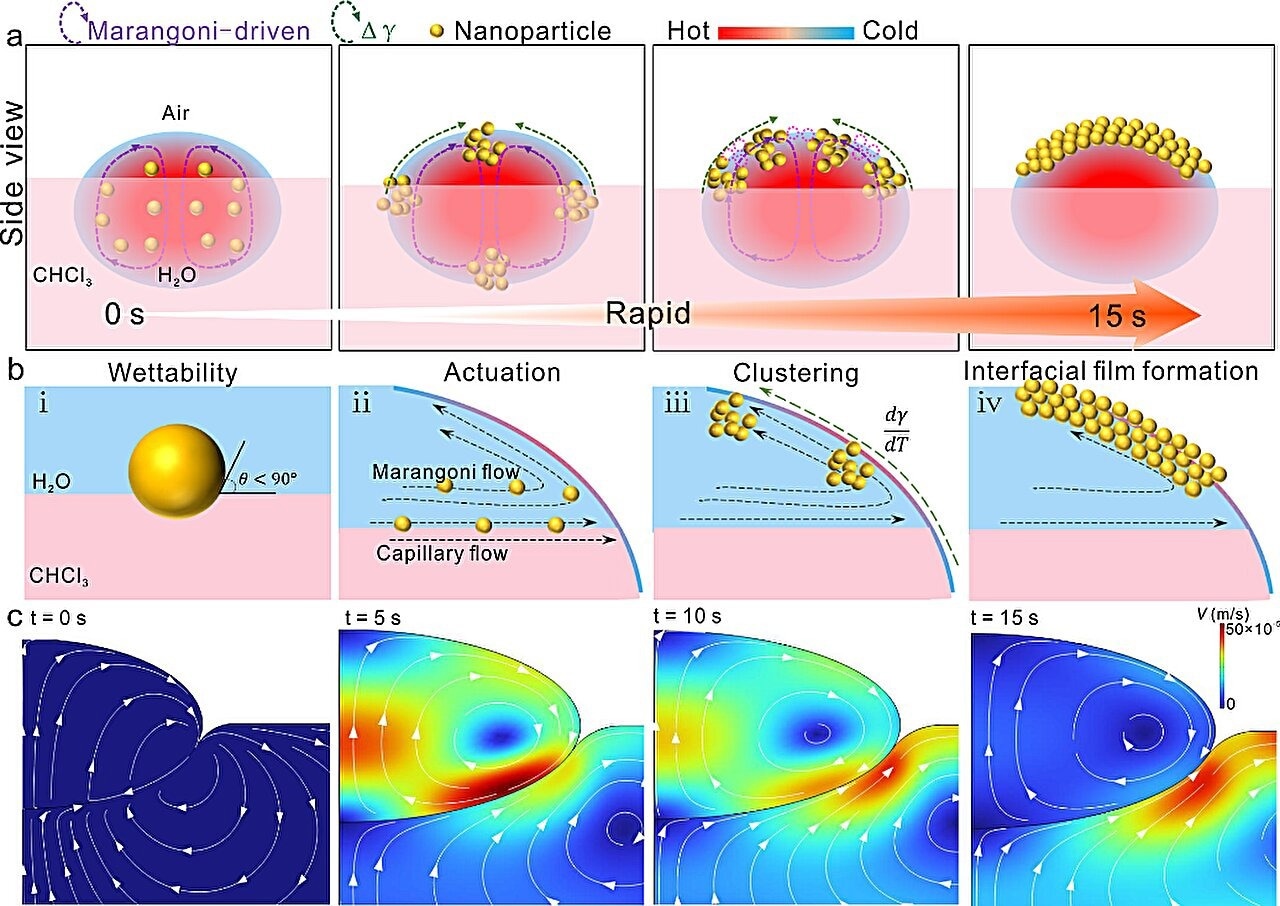A novel method for assembling small nanoparticles in a three-phase catalytic process to enable enhanced surface-enhanced Raman scattering (SERS) sensing was recently proposed by a research team headed by Prof. Yang Liangbao from the Hefei Institutes of Physical Science (HFIPS) of the Chinese Academy of Sciences (CAS).
 Analysis of the three-phase catassembly process. Image Credit: Xie Tao
Analysis of the three-phase catassembly process. Image Credit: Xie Tao
Analytical Chemistry published the study.
Currently, it is challenging to swiftly and easily assemble large-area, high-density plasma multilayer films.
Researchers developed the idea of “catassembly” to improve the rate and management of the dynamics of nanoparticle assembly to solve this problem. This method involved dropping heated Au sols into oil chloroform (CHCl3), which caused plasmonic multilayers to rapidly assemble at the oil-water-air (O/W/A) interface in less than 15 seconds.
Interfacial catassembly offered significant advantages by providing large-area, high-density plasmonic hot spots thus enabling highly sensitive and stable SERS sensing.
Tao Xie, Professor, Institute of Health and Medical Technology, Hefei Institutes of Physical Science, Chinese Academy of Sciences
The 10 nm gold nanoparticle-based plasmonic multilayers demonstrated exceptional sensitivity, able to identify crystal violet molecules at as low as 1 nM concentration. Additionally, these multilayers showed remarkable stability, with an estimated relative standard deviation (RSD) of 10.0%.
Significantly, these results were equivalent to those obtained using typical layer-by-layer construction using 50 nm gold nanoparticles, demanding the standard understanding of plasmon characteristics in small particles into question.
The use of small-nanoparticle SERS sensing was made possible by the three-phase catassembly approach, which demonstrated the remarkable SERS sensitivity and stability of the plasmonic multilayers created by 10 nm gold nanoparticles.
Journal Reference:
Xie, T., et. al. (2023) Three-Phase Catassembly of 10 nm Au Nanoparticles for Sensitive and Stable Surface-Enhanced Raman Scattering Detection. Analytical Chemistry. doi:10.1021/acs.analchem.3c02703